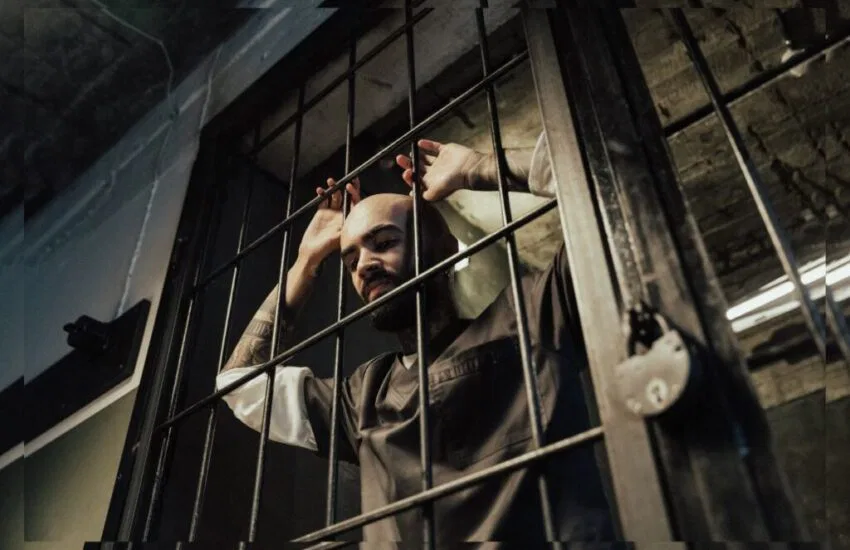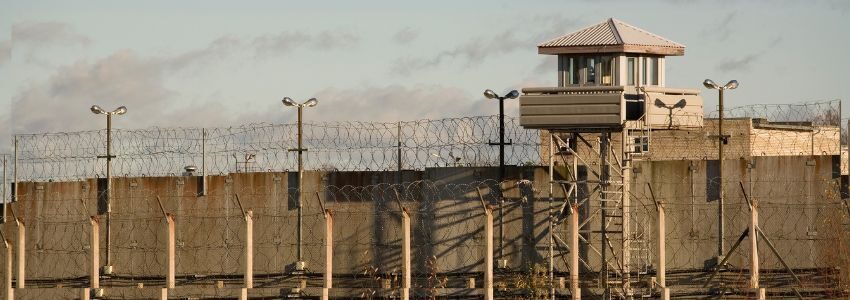The Different Types of Prisons Explained

Published May 20, 2024
There are many types of prisons because the prison population vary significantly. Segregation is needed for optimum work and effective management of incarcerated individuals.
Below, you’ll come to realize that there are many variations of correctional facilities. You’ll also came to conclude each of them are impactful and crucial in their unique ways. Let’s start.
Prisons vs. Jails
Many people assume that prisons and jails mean the same thing. Yet, these two terms refer to two very different aspects of the criminal justice system. Understanding their difference is essential before discussing the various types of prisons.
Jails are only used to detain inmates for a relatively short period. They are generally used when these detainees await their trial or sentencing. Some inmates who have committed a misdemeanor and been given a brief sentence of a year or less may also serve their time in jail.
Prisons are long-term facilities built to hold inmates serving sentences of more than a year. They also house criminals who have committed more severe crimes, like felonies.
Jails are operated by local governments, such as counties and cities, while prisons are managed by the state or federal government.
1. State Prisons
State prisons hold offenders who have committed state crimes. Examples of them are assault, arson, robbery, or homicide.
These prisons operate under the jurisdiction of a state’s government. They vary in size, security levels, and the kinds of programs they offer to detainees. These levels range from minimum to maximum security. State prisons have different facilities catering to the inmate population’s specific needs and risk levels. State prisons have medium security for general population inmates and supermax for high-risk or dangerous inmates.
2. Federal Prisons
Incarcerated individuals held in federal prisons have been charged with federal crimes. Such crimes include drug trafficking, tax fraud, identity theft, and child pornography, to name a few. There are 122 federal prisons throughout America, housing more than 151,000 inmates.
Many different factors are considered when deciding which prison an offender will be assigned to. These include their offense and criminal record, mental and physical health, and proximity to family.
Different Types of Federal Prisons
1. Minimum Security
Also known as Federal Prison Camps, these prisons have the lowest level of security and are used to house nonviolent offenders with a relatively clean record. FPCs resemble college campuses more than prisons because they offer little to no perimeter fencing. Inmates are also housed in dorm-style units.
Moreover, FPC typically offers work programs and classes to rehabilitate inmates.
2. Low Security
Low-security facilities still have a robust orientation toward inmate work interventions. Yet, they also have perimeter fencing and a higher staff-to-inmate ratio than minimum security here. Some of these prisoners may have a history of violence. Yet, they must have less than 20 years left on their sentence to be held in a low-security facility.
3. Medium Security
Medium-security federal correctional institutions are much more likely to house violent offenders. It is the security level that moves to cell-based housing. These prisons also have more rigorous treatment programs. Moreover, perimeter fencing often includes razor wire with electronic detection systems.
4. High Security
High-security prisons are also acknowledged United States Penitentiaries (USPs). As the name suggests, they provide the highest level of security. Here, inmates are closely monitored by guards and cameras. These prisons are also surrounded by razor-wire fencing or walls and have watchtowers.
5. Administrative
This is a particular class of prison. It encompasses other kinds of institutions crafted to hold inmates with special consideration. Examples are those chronically ill, extremely dangerous, or at high risk of escape. The administrative level includes ADX and the Administrative Maximum Security Penitentiary. ADX is the nation’s only “supermax prison.” It provides extreme security for the country’s most dangerous offenders. Here, detainees spend most of their time in their cells under 24-hour supervision.
6. Private Correctional Institutions
In some instances, more prison capacity is needed than what the government can provide. In these cases, local, state, and federal governments partner with a private, for-profit firm to run a prison on their behalf. The BOP reports that an estimate of 11 percent of detainees are currently held in private correctional facilities.
7. Juvenile Detention Centers
Juvenile detention centers are called “youth prisons ‘and are operated by states. They house and rehabilitate offenders under the age of 18. Inmates can be sanctioned to juvenile detention for a variety of reasons. It can include truancy, property crimes, drug-related offenses, and violence. Their primary goal is to educate and rehabilitate offenders to rejoin society.

ADVERTISEMENT
Frequently Asked Questions About Different Types of Prisons
1. What are level 4 prisons in the US?
- Minimum security
- Low security
- Medium security
- High security (Level 4)
- Administrative security
2. What are the two different types of prisons in the US?
- Federal prisons
- State prisons
3. What is a level 6 prisoner?
Level 6 designation might be used to describe inmates or prisons that are beyond the traditional maximum security level. It often suggests an extreme level of security measures. In the US federal prison system, it is also sometimes called “supermax” or administrative maximum (ADX) facilities.
4. What is the lowest level of prisons?
The lowest level of prisons in the US is known as Minimum Security institutions. They are often referred to as Federal Prison Camps. These facilities are designed to house inmates who are considered low-risk, typical nonviolent offenders. These have clean conduct records in the prison system.
And there you have the different types of prisons. We now came to understand that the whole prison system works differently yet hold a one goal, and that is to care for inmates the best way they can so these individuals can be reintegrated to society effectively. In terms of extremely dangerous criminals, a special kind of penitentiary is required so their harm is put to an end.
Reduce Your Jail Call Costs By Up To 90% Per Minute With GlobalTel
GlobalTel’s inmate calling service lowers jail call per minute rates by up to 90% for jail calls from US facilities. Sign up now and use the special jail call phone number we create for you to eliminate the long distance jail call fees. Try GlobalTel for only $45.99 for 90 days. Make US/domestic and international jail calls at the local rate and stay connected to your incarcerated loved ones for less. Learn more about how to sign up for calls from inmates here.

This Content Is Fact Checked
Our esteemed team of specialists has thoroughly validated the accuracy of this information. Discover further details about the rigorous editorial guidelines for our website here.
ADVERTISEMENT

About The Author
I am Tracy Gorman, a seasoned writer with a passion for crafting content on various subjects. I possess the expertise to delve into any niche and deliver exceptional articles.




